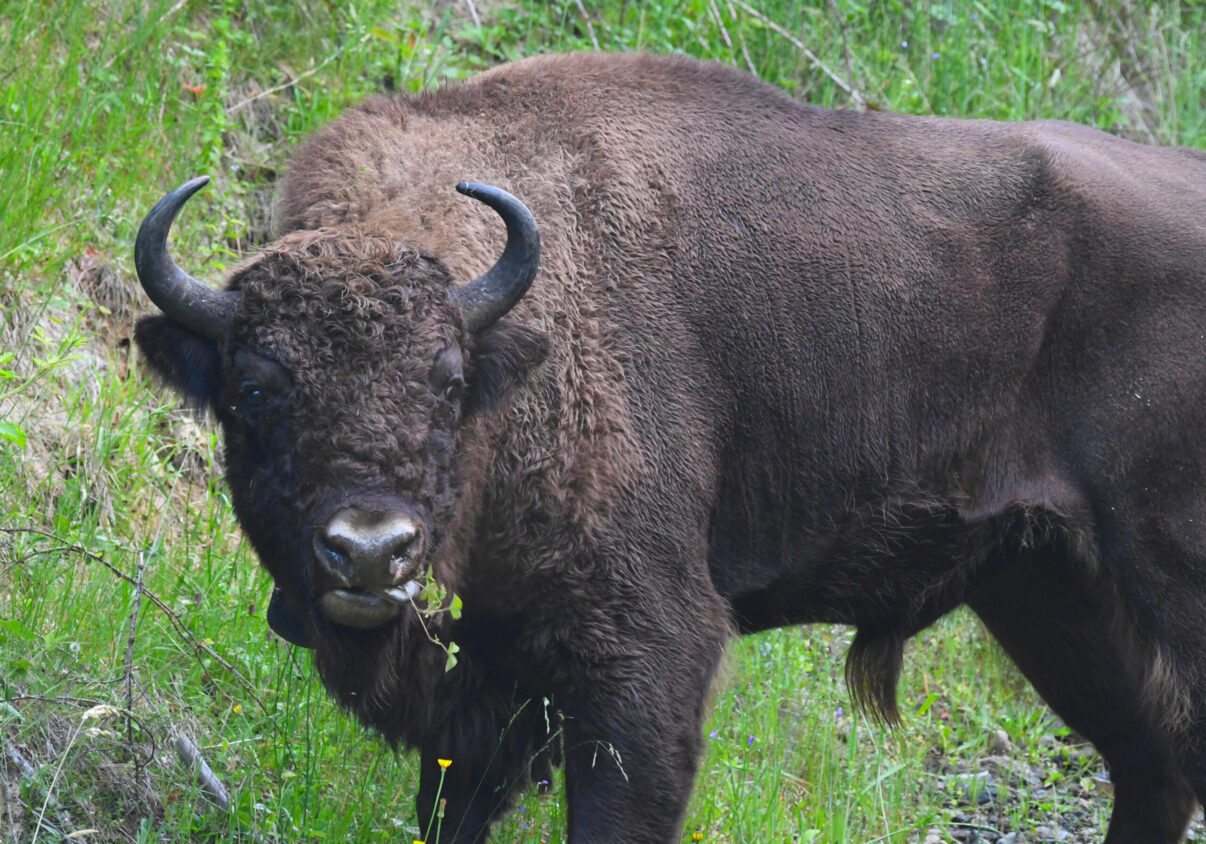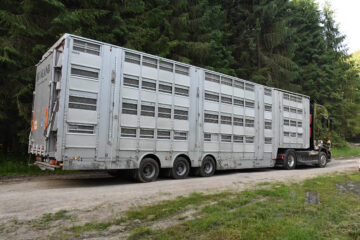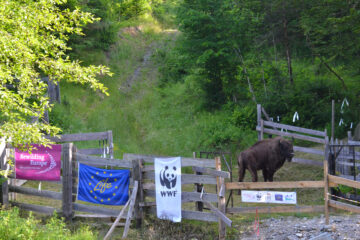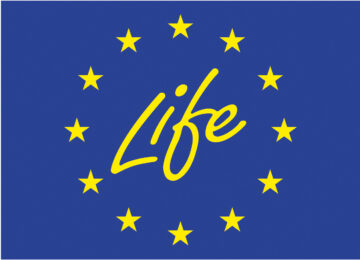Europe’s first all-male bison translocation has seen seven bulls arrive in the Southern Carpathians rewilding area in Romania. Their release into the wild will boost the genetic diversity of the population already roaming free here and ensure its beneficial impact continues to grow.

Towards herd viability
An all-male herd of seven European bison, sourced from four reserves in Germany, has just arrived in the Southern Carpathians rewilding area in Romania. The animals, which will initially be kept in an acclimatisation enclosure before their release into the wild, have been carefully selected to enhance the genetic diversity of the free-roaming bison that have already been reintroduced in the Ţarcu Mountains. This is the first time that an all-male bison herd has been translocated in Europe and follows the release of an all-female herd in the area in May.
Rewilding Europe and WWF Romania have been reintroducing European bison into the Southern Carpathians rewilding area, which is located close to the village of Armeniș in western Romania, since 2014. With 26 bison now translocated to the Ţarcu Mountains in 2021, the total free-roaming population will number more than 100 animals when the latest herd is released. These animals will now be allowed to breed naturally, creating a viable population that supports a thriving wild nature and local nature-based economy. Enhancing the genetic diversity of the reintroduced herds is important in order to maintain their health and resilience as they grow.
Preparing for a life in the wild

The Southern Carpathians rewilding team works with a wide range of breeding centres and reservations across Europe, consulting with numerous specialists to identify the right bison to join herds already in the wild. The latest translocation involved lengthy preparations by Rewilding Europe, WWF Romania and the German reserves supplying the bison: Bad Berleburg, Donaumoos, Neumünster and Bielefeld.
The decision to relocate the males was taken after a complex selection process and consultations with the IUCN SSC Bison Specialist Group about the behaviour and conservation of the species. The bison spent six months together at Donaumoos prior to the translation – allowing the males to become familiar with each other gives them the best chance of thriving in the wild of the Țarcu Mountains.
An influential and impressive species
The newly arrived bison will be closely monitored by bison rangers for at least 21 days to ensure they are properly acclimatised. They will then be released into the wild, where they will be free to explore and interact with their new home. European bison are a keystone species: their grazing helps to maintain biodiversity-rich mosaic landscapes of forests and grasslands, while they also form a key component of local food webs.
While the males that have just been translocated are still young, they can weigh more than 800kg at maturity (females can reach over 600kg). Male bison are solitary and spend most of their time away from the females and their calves, but return during the breeding season and over the winter.
Daniel Hurduzeu, a bison ranger attached to the Southern Carpathians rewilding team, is familiar with the impressive nature of the animals under his supervision.
“When you are monitoring males such as Bilbo, who was brought here from Sweden in 2017, you can’t help but treat these animals with respect – which is how a wild animal should be treated. We have no way of weighing him, but he must be at least 900 kg. Well-fed journeys through the area’s forests, hills and pastures mean he’s pretty much all muscle.”
Collaborative effort

Once widespread throughout Europe, European bison were driven to extinction at the beginning of the twentieth century by overhunting and habitat loss. From 1951 onwards, herds of zoo-bred European bison were successfully reintroduced into the wild, with the largest populations now found in Belarus, Poland and Russia. Today, there are around 7000 free-roaming European bison.
Overseen by Rewilding Europe and WWF Romania, the ongoing reintroduction of European bison into the Southern Carpathians is the largest initiative of its kind in Romania. In the future, when populations have been reintroduced in other areas, they will be connected by natural corridors to enable migration and genetic exchange.
Bison rewilding in the Southern Carpathians is made possible with funding from the European Commission’s LIFE programme, as well as the invaluable support of reserves and zoos throughout Europe, the national authorities of Romania, ROMSILVA (Romania’s national forest administration), forestry offices, hunting associations, tour operators and the communities of the rewilding area.
Want to know more?
- Bison rewilding in the Southern Carpathians
- Track reintroduced bison in the Southern Carpathians with the European Safari Company

